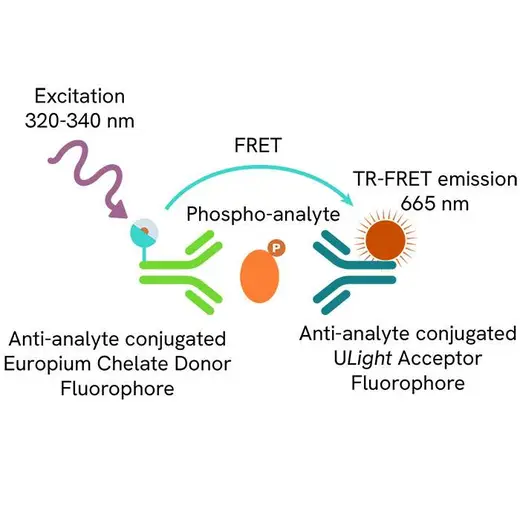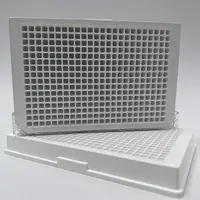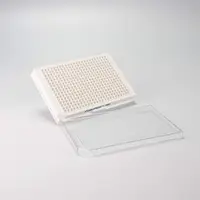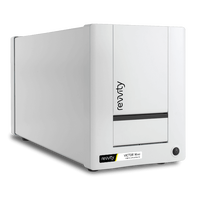
LANCE Ultra Phospho-AKT1/2/3 (Thr308) Detection Kit, 500 Assay Points




LANCE Ultra phospho-AKT1/2/3 (Ser473) kits are designed for the detection of AKT1, AKT2, and AKT3 (phosphorylated at residue S473) in cell lysates using a simple, homogeneous LANCE Ultra assay (no wash steps). This assay is compatible with both adherent and suspension cells.
For research use only. Not for use in diagnostic procedures. All products to be used in accordance with applicable laws and regulations including without limitation, consumption & disposal requirements under European REACH regulations (EC 1907/2006).
Product information
Overview
Please note control lysates are NOT included in kits. Control lysates are sold separately, catalog number TRF4002S.
Formats:
- Our 500 assay point kit allows you to run 500 wells in 384-well format, using a 20 µL reaction volume.
- Our 10,000 assay point kit allows you to run 10,000 wells in 384-well format, using a 20 µL reaction volume.
LANCE® and LANCE® (Lanthanide chelate excite) Ultra are homogeneous (no wash) TR-FRET (time-resolved fluorescence resonance energy transfer) technologies. One antibody of interest is labeled with a donor fluorophore (a LANCE Europium chelate) and the second antibody is labeled with an acceptor fluorophore [ULight™ dye]. Upon excitation at 320 or 340 nm, energy can be transferred from the donor Europium chelate to the acceptor fluorophore if sufficiently close for FRET (~10 nm). This results in the emission of light at 665 nm. Data are represented as ratiometric (665/615 nm X 10,000).
AKT, also known as protein kinase B, is an important regulator of numerous cellular processes including cell survival, glucose metabolism, transcription, and apoptosis. AKT has three closely related isoforms (AKT1, AKT2, and AKT3), and these isoforms have been shown to act on both common and unique downstream substrates. AKT activation can be induced by a number of stimuli, whereby AKT is transported to membrane for phosphorylation. Activation occurs upon AKT phosphorylation of Thr308 by PDK1 and of Ser473 by mTORC2. AKT subsequently dissociates from the membrane and phosphorylates targets both in the cytoplasm, as well as, the cell nucleus. Deregulation of AKT has been implicated in a number of disease states including cancer, cardiovascular disease, and diabetes.
Specifications
| Application |
Kinase
Protein Analysis & Detection
|
|---|---|
| Assay Pathway |
PI3K/Akt/mTOR
|
| Assay Points |
500
|
| Assay Target Class |
Phospho-protein
|
| Automation Compatible |
Yes
|
| Brand |
LANCE Ultra
|
| Detection Method |
Time-Resolved Fluorescence (TRF)
TR-FRET
|
| Shipping Conditions |
Shipped in Blue Ice
|
| Therapeutic Area |
Cardiovascular
Metabolic
Neuroscience
|
| Unit Size |
500 Assay Points
|
Resources
Emerging pathways to neuroinflammation and neurodegeneration
Neurodegenerative diseases, such as amyotrophic lateral sclerosis...
STAT3 is a particularly important therapeutic target since it is constitutively active in a range of cancer cells lines and human...
An in-depth review of molecular and cellular pathways
The maintenance of proteostasis, the biological mechanisms that control the...

SDS, COAs, Manuals and more
Are you looking for technical documents for this product. We have housed them in a dedicated section., click on the links below to explore.


How can we help you?
We are here to answer your questions.


































